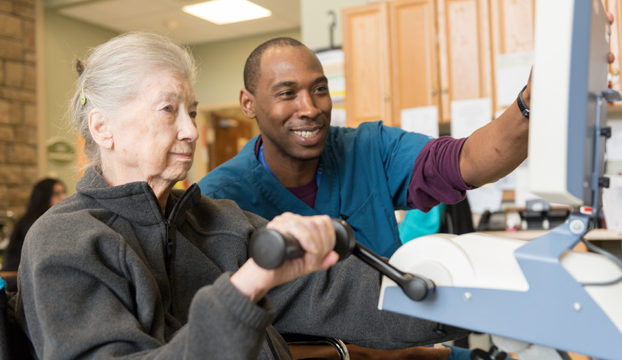The Impact of Athletic Rehab on Speeding up Injury Healing and Enhancing Athletic Output
Wiki Article
Athletic rehabilitation plays a vital role in assisting athletes recover from traumas and improve their overall performance. When athletes get hurt, it can be disheartening and demoralizing. However, with the right recovery plan, they can return to their sport more robust and better equipped than previously. Athletic recovery focuses on specific exercises and therapies that address the damaged area, aiding to reduce pain and restore function. This procedure not only aids in healing but also boosts athletic performance by tackling any weaknesses or discrepancies that may have contributed to the trauma.
One of the key components of athletic recovery is the evaluation of the trauma. A qualified professional, such as a physical specialist or athletic coach, evaluates the athlete's condition to identify the most effective path of treatment. This assessment includes understanding the type of injury, its severity, and how it impacts the athlete's capability to compete. By collecting this data, the recovery expert can develop a customized care strategy that includes workouts, stretches, and methods like cold or heat therapy. This individualized method ensures that the read sportsperson receives the best treatment for their specific needs.
As athletes progress through their rehabilitation, they often engage in various exercises designed to strengthen the injured area. These workouts may include strength training, flexibility work, and balance training. Fortifying the muscle groups around the trauma assists to support the articulation and avoid subsequent traumas. Additionally, enhancing range of motion can improve the scope of movement, allowing sportspeople to perform more effectively in their sport. Balance training is also essential, as it helps athletes maintain stability and coordination, which are vital for peak performance.

Another important aspect of sports rehabilitation is education. Athletes gain knowledge about their injuries, the healing process, and how to avoid subsequent problems. This knowledge empowers them to take an proactive role in their rehabilitation. Comprehending the importance of proper preparation and cool-down routines, as well as the importance of paying attention to their bodies, can assist sportspeople avoid re-injury. Furthermore, recovery experts often provide guidance on diet and fluid intake, which are vital for healing and overall athletic capability.
In summary, sports rehabilitation is crucial for sportspeople recovering from injuries and working to improve their performance. Through customized evaluation and treatment strategies, sportspeople can recover strength, flexibility, and stability. The learning offered during rehabilitation empowers sportspeople to take control of their recovery and prevent subsequent injuries. By investing effort and energy into sports recovery, sportspeople not only heal but also enhance their abilities, making them more competitive in their individual activities.